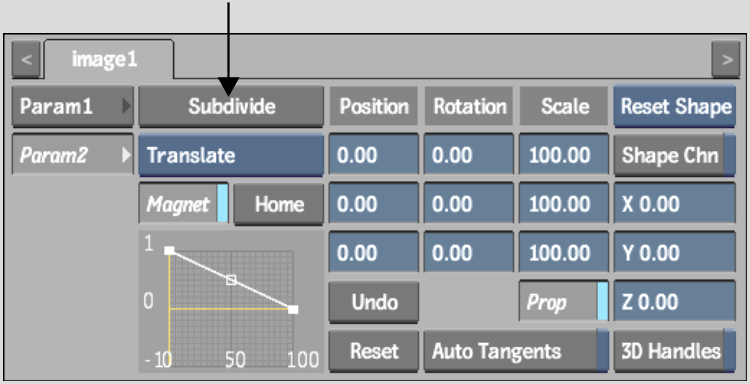Show in Contents

Add to Favorites

Home: Smoke

Warping an Extended Bicubic Surface

Warping an Extended Bicubic Surface

Transforming Multiple Points

Subdividing an Extended Bicubic
Subdivide the bicubic surface to increase the
number of vertices and tangents. Then translate the vertices for
a smaller region of the image for more precision. You should warp
the surface with a small number of subdivisions to obtain the best
results. After applying some deformations to a large portion of
the surface, subdivide the surface further and perform deformations
on a more localized region of the surface.
To
subdivide extended bicubics:
- From
the Extended Bicubic Param2 menu, click Subdivide.
- Transform
the tangents to achieve the effect you want.
To
move the reference point:
- Select
the reference point.
The reference point turns red when selected.
- Drag
the reference point to a new location, or use the X, Y and Z fields
to assign a new coordinate for the reference point.
To
rotate multiple surface points:
- Set
the reference point values you want to use as the axis of origin
using the X, Y, Z Reference Point fields.
- Select
multiple surface points by pressing Ctrl and
dragging to select the surface points.
- From
the Edit Mode box, select Rotate.
A 3D trackball appears on the reference point.
- Use
the 3D trackball to rotate the reference point and selected points.
All selected points rotate around the reference point.
To
scale multiple surface points:
- Set
the reference point values you want to use as the axis of origin
using the X, Y, Z Reference Point fields.
- Select
multiple surface points by pressing Ctrl and
dragging to select the surface points.
- From
the Edit Mode box, select Scale.
- Drag
in a direction in the image window to scale accordingly.


